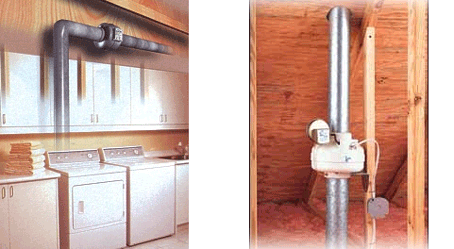The photo below shows an accumulation of dryer lint in an attic after years of the vent terminating in it.
Dryer blowing lint into attic.
Lint from the dryer is collecting on the insulation in the attic.
The warm moist air inside the vent tends to.
The problem with attics the attic is usually colder than the rest of the house during the winter and that can create a problem for a dryer vent.
There is a metal roof flashing covering the vent pipe.
Venting dryers and bathroom and kitchen fans into an attic is a very poor practice.
The first area to clean after every load is the dryer lint trap by removing the lint from the screen and wiping clean the edges.
Venting a dryer into an enclosed space is never a good idea.
However condensation collected in the low spots of the flexible hose.
Lint and grease are fire hazards moisture promotes molds and heat will cause snowmelt that often results in ice dams.
Today s homeowner serves cookies to analyze traffic and better serve you.
Cleaning the vent line.
My gas dryer aluminum duct pipe vents into the attic about 3 inches from the roof.
Dryer lines need to be cleaned periodically.
It introduces moisture heat and grease in a space that is not designed to receive them.
How can i vent it outside to make it less of a fire hazard improperly vented dryers and lint buildup cause over 15 000 fires a year.
It literally rains on the insulation.
Should the duct pipe be extended so that the lint would go outside the attic on to the roof.
This code requirement is usually referred to when a homeowner wants to install air conditioning ducts from the house hvac system to the garage but also applies for dryer ducts.
Laundry lint consisting primarily of cotton and synthetic fibers is obviously quite flammable.
The moisture from wet clothes can cause mold to grow inside walls which can lead to respiratory issues certain types of cancers and death.
This is unsatisfactory because of the lint and because the hot dryer air condenses when it hits the cold attic air.
Venting your dryer to the attic is not only a potential fire hazard but can result in moisture problems which causes more problems.
Mold and dust dryers that vent indoors may go unnoticed especially if they are releasing fumes into an attic or the vent leaks into the space between walls.
Its continued accumulation in an attic space can pose a significant fire hazard.
It doesn t matter what you put in your dryer the fibers will come loose after heat is applied and the garment is constantly tossed and turned by the dryer drum.
Recently we have simply vented the dryer into the attic.

